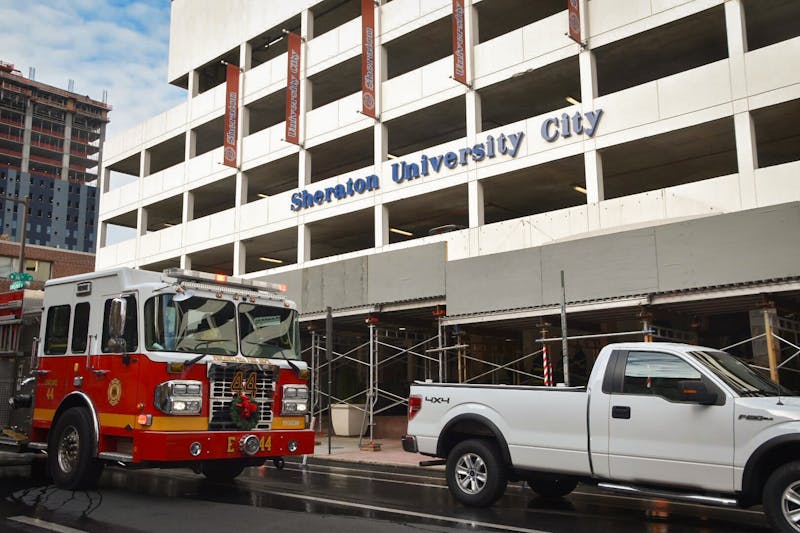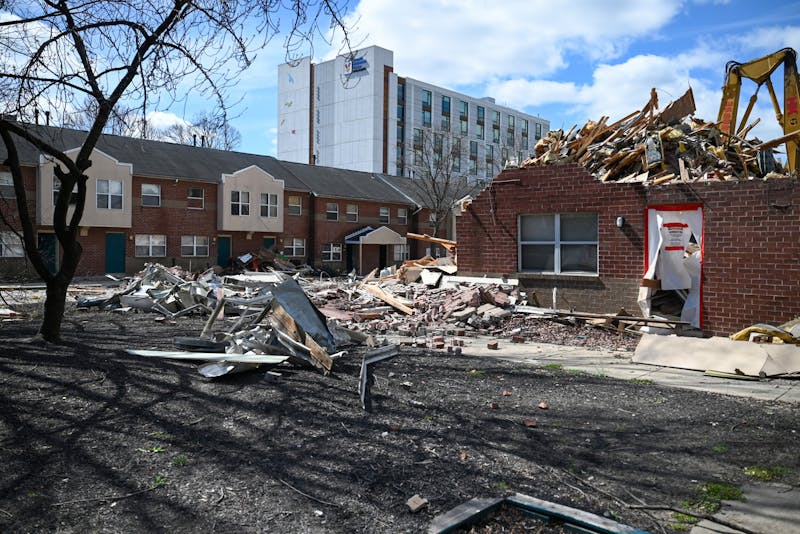
Reports evaluating the health and environmental impacts of the Jan. 31 medical jet crash in Northeast Philadelphia were recently released.
The crash — which killed seven people and injured 24 — left an eight-foot crater of contaminated soil in its wake and sparked a fire that burned homes and cars. The potential human health impacts from lingering pollutants is still under debate and further environmental remediation efforts at the site will likely be necessary, according to the reports.
At least five homes, multiple cars, and airplane debris were consumed in a fire resulting from the crash, sparking an immediate multi-agency response.
“Our members extinguished multiple fires in multiple locations, immediately began assessing and treating victims and evaluated the area for other hazards,” Philadelphia Fire Commissioner Jeffrey Thompson said in a Feb. 1 statement.
The Philadelphia Department of Public Health reported that the air quality did not reach “dangerous level[s]” at any point during the incident. However, a mobile van monitoring pollutants near the crash site did report levels of various “unhealthy, toxic, or cancer-causing pollutants,” according to data from Philadelphia’s Air Management Services.
Pharmacology professor and Director of the Community Outreach and Engagement Core at the Center of Excellence in Environmental Toxicology at Penn Perelman School of Medicine Marilyn Howarth said that since the samples were collected after the fires, they likely did not capture the worst of the pollution.
“The canister sampling that they did is a very brief grab of air,” Howarth said. “It is a good test for exactly what was happening at the moment, but it really makes it very difficult to determine what happened [during the explosion] and [immediately] afterwards."
According to Howarth, the byproducts of burning houses, cars, and debris pose a great risk of exposure to air pollutants. Her research also found that airborne toxins from the fires — including heavy metals and asbestos — could be retained in the soil even after air pollutants have dispersed.
Air pollution and soil contamination have been ongoing problems for Philadelphia residents, who feel these factors have been “harming their health.” In 2018, Haworth told The Daily Pennsylvanian that her research found soil contaminants “in people’s yards.”
Airborne particulates from these fires can exacerbate health issues such as asthma, COPD, and, more rarely, cause heart attacks. Residents with lung cancer or heart disease are particularly at risk from particulate matter exposure.
“The jet fuel … that’ll burn reasonably clean,” Drexel professor emeritus of Environmental and Occupational Health Arthur Frank told WHYY. “It’s the other fires — the parts of the airplane and the house fires that occur, the car fires, the tires — those will put out a lot of particulate matter.”
Shortly after the crash, city emergency management officials alerted residents and motorists to steer clear of the area and take precautions to avoid smoke exposure. Two injuries from the crash impacted first responders, specifically a Philadelphia police officer treated for smoke inhalation and a firefighter who suffered a heart attack, according to Mayor Cherelle Parker’s spokesperson Joe Grace.
A report by the Pennsylvania Department of Environmental Protection found that unburned fuel from the plane also leaked into the soil at the crash site.
Remediation attempts at the eight-foot crater and nearby stormwater inlets removed a total of more than 800 gallons of liquid waste, as well as “seven dumpster-sized containers worth of contaminated soil,” according to a Feb. 4 inspector report. The crater was then filled in.
According to a spokesperson for the Philadelphia Water Department, tap water is safe to drink and use.
Some amount of leaked jet fuel entered the sewer system near the crash site sparking a fire, Philadelphia Water Department spokesperson Brian Rademaekers said. Most of the fuel is expected to have burned off during the fire, and a hazardous waste removal company was hired to clean the inlets and remove excess material.
The Daily Pennsylvanian is an independent, student-run newspaper. Please consider making a donation to support the coverage that shapes the University. Your generosity ensures a future of strong journalism at Penn.
Donate












